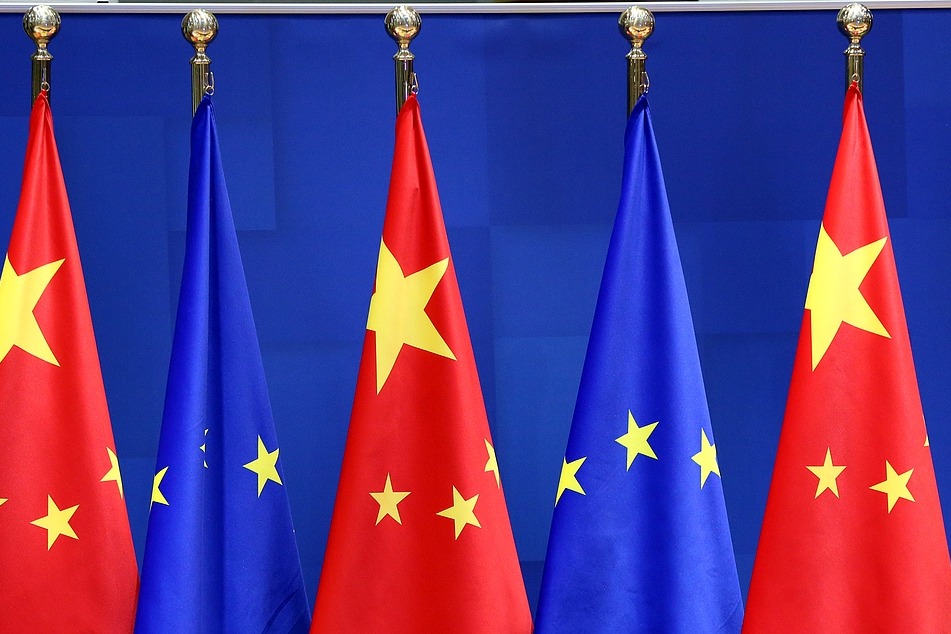Bedrock to build on


Dynamic and evolving economic relations between China and New Zealand have been underpinned by rules and trade architecture of their FTA
Editor's note: The world has undergone many changes and shocks in recent years. Enhanced dialogue between scholars from China and overseas is needed to build mutual understanding on many problems the world faces. For this purpose, the China Watch Institute of China Daily and the National Institute for Global Strategy, Chinese Academy of Social Sciences, jointly present this special column: The Global Strategy Dialogue, in which experts from China and abroad will offer insightful views, analysis and fresh perspectives on long-term strategic issues of global importance.
The visit of Chinese Premier Li Qiang to New Zealand is the first of its kind in seven years. Such high-level visits are the cornerstone of a constructive bilateral relationship and a testament to the success of the groundbreaking China-New Zealand Free Trade Agreement. The 2024 visit is especially significant as it coincides with the 10th anniversary of the China-New Zealand comprehensive strategic partnership, offering a prime opportunity to reflect on past achievements while considering future avenues of collaboration.
Since the implementation of the New Zealand-China FTA in 2008, bilateral trade has soared, reaching nearly NZ$38 billion ($23.28 billion) in 2023. Two years ago, the agreement was upgraded to reflect changes in the global economy, incorporating e-commerce, competition policy, government procurement and environmental trade provisions. The rise of artificial intelligence, digital services and other avenues of opportunity means that both sides should remain open to frequently revisiting the agreement that has served each side so well. Building on the world-class agreement will be vital to maintain positive economic relations, given the importance of trade to both countries.
New Zealand is a trading nation that places immense value on robust trade rules. The China-New Zealand FTA has created the primary architecture for the relationship through trade facilitation and dispute resolution procedures. This is important bilaterally and also strategically as a means of promoting the development of a high-quality, rules-based system of commerce between states of different sizes, stages of development and national interests. Given its success, it is worth considering how the principles underpinning the FTA could be further improved and perhaps even act as a stimulant for reform at the multilateral level.
An expectation of Premier Li's visit could be further upgrades to the trade in services agreement within the existing FTA. New Zealand Prime Minister Christopher Luxon has announced that New Zealand aims to double the value of its exports over the next decade, with sectors such as education, tourism and agri-tech playing a crucial role. Strengthening trade in services could significantly contribute to this goal, and reforming the China-New Zealand FTA would be a logical step in pursuing that aim.
The FTA has benefited both sides economically and reinforced the collaborative atmosphere that underpins the broader relationship. It further opens opportunities for cooperation in new areas.
The success of Chinese electric vehicle manufacturers in New Zealand, visible on the streets, is a testament to the importance of trade facilitation mechanisms such as FTAs. As New Zealand's electrical grid is over 80 percent renewable, there is a ripe opportunity for even deeper cooperation in clean energy technologies. This aligns with New Zealand's commitment to open trade, climate action and embracing innovation and sustainability.
Beyond trade, there are numerous sectors where collaboration could thrive, such as agricultural research, gaming and health foods. Leveraging the momentum from Premier Li's visit under the FTA architecture could spur new agreements in these areas, reflecting the dynamic and evolving nature of economic relations underpinned by rules and trade architecture.
New Zealand's relationships with Pacific partners and Australia are also integral to New Zealand's trading strategy. While some hold concerns about over reliance on any single market, the principles guiding economic engagement with China, especially those encapsulated in the FTA, can be applied to these relations and to the multilateral setting. Mature partnerships focus on areas of mutual interest while managing differences constructively within existing multilateral frameworks such as the General Agreement on Tariffs and Trade and the World Trade Organization.
Another area that could benefit from increased focus relates to enhancing people-to-people exchanges through short-term visa waivers. Such a step would boost tourism and cultural exchanges, benefiting both economies and people. China's visa-free policy with several European nations has proven popular, and a similar approach with New Zealand could yield positive results. Tourism operators in New Zealand would welcome increased numbers and support the notion of visitors coming during the shoulder season. Encouraging more visitors to China would further strengthen bilateral connections.
Marking the 10th anniversary of the New Zealand-China Comprehensive Strategic Partnership with such initiatives as these would signify a forward-looking relationship. While differences between China and New Zealand exist, the focus remains on nurturing areas of common interest and cooperation. By doing so, both sides ensure that the partnership between the two countries remains robust and beneficial for both nations and fit for purpose in today's world.
As New Zealand welcomes Premier Li, the country can reflect on the areas where more work can be done in the bilateral and multilateral space to construct a more robust rules-based trading system. The New Zealand-China relationship has achieved much in the past decade under the China-New Zealand FTA architecture. With a considered approach to each country's areas of complementarity, it should be possible to ensure the next decade sees similar levels of achievement.
The author is a researcher at the New Zealand Contemporary China Research Centre. The author contributed this article to China Watch, a think tank powered by China Daily.
The views do not necessarily reflect those of China Daily.
Contact the editor at editor@chinawatch.cn.


































